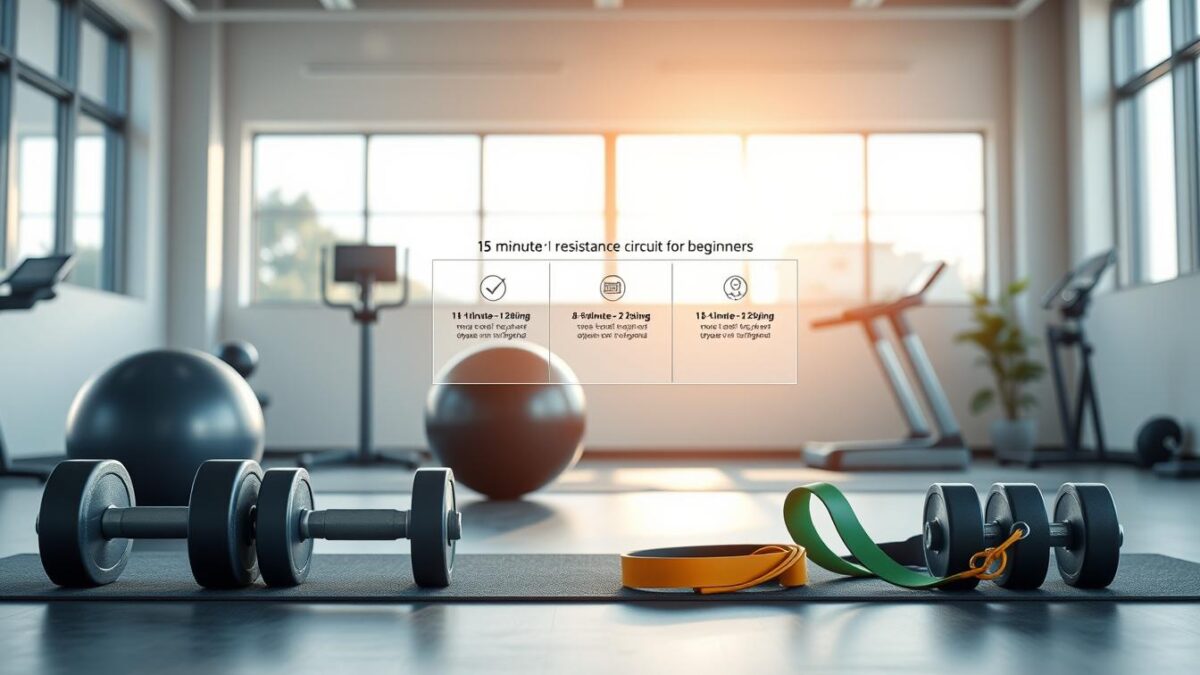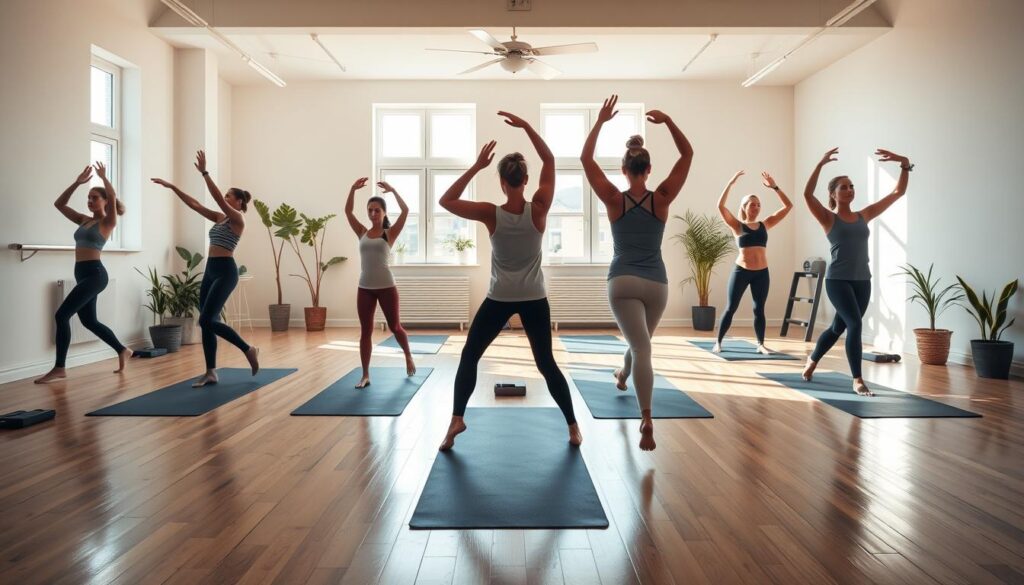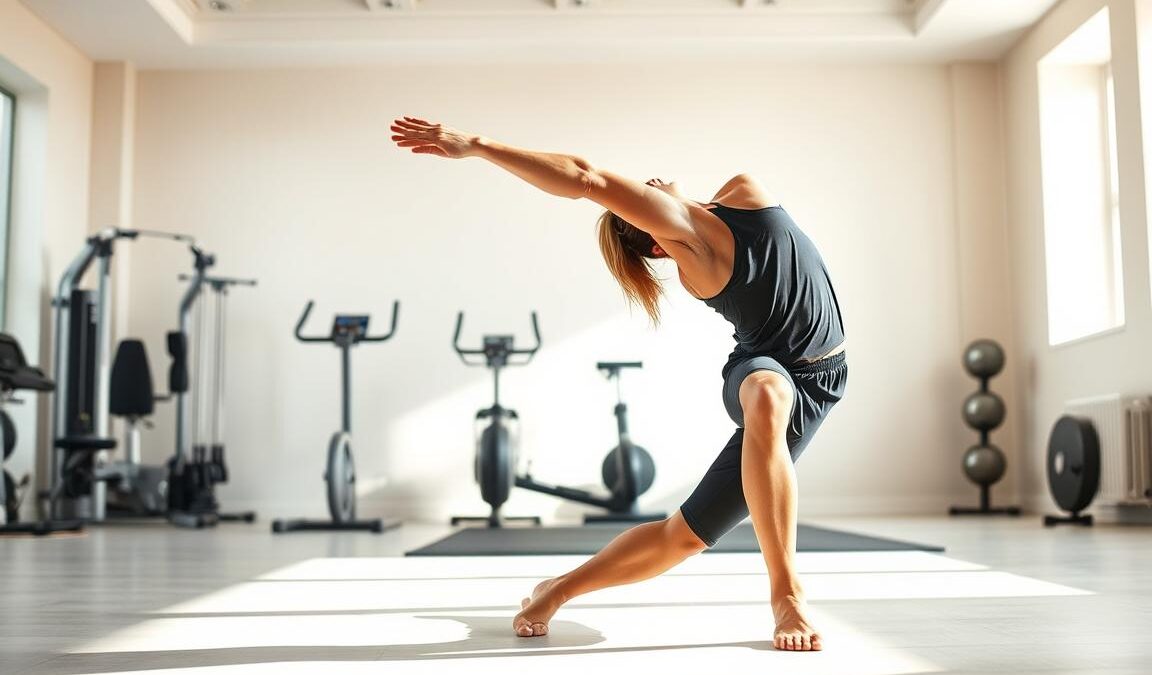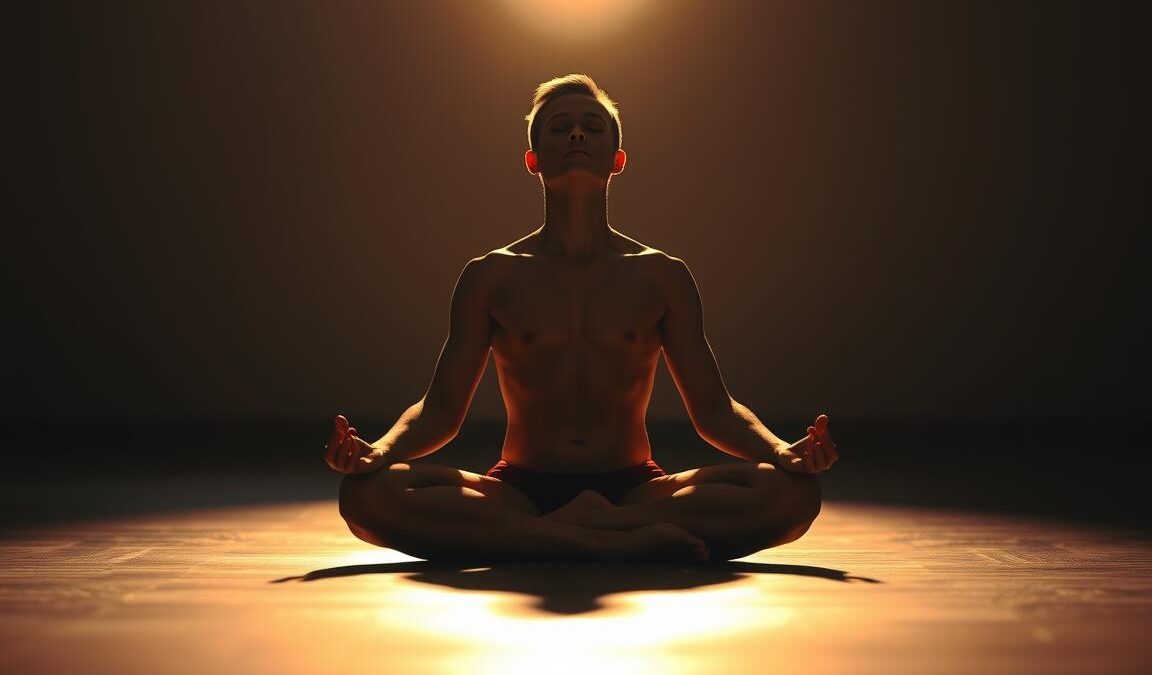
15‑Minute Resistance Circuit for Absolute Beginners
Ready to start your fitness journey? This 15-minute circuit is perfect for beginners. It uses body-weight exercises that are easy and great for working out at home. No need for fancy equipment!
The Benefits of Body-Weight Exercises
Body-weight exercises are great for boosting fitness levels. They’re perfect for anyone with a busy schedule. These workouts are good for everyone, from beginners to advanced fitness enthusiasts. You can do them anywhere, whether at home, while traveling, or outdoors.
Accessibility and Convenience
Body-weight exercises are super convenient. You don’t need big equipment or a gym membership. Just a few minutes of exercise at home can keep you fit. This makes it easy to stick to your workout routine, without the hassle of commuting or scheduling.
Lower Injury Risk
Body-weight exercises are safer than heavy weight training. They mimic natural movements, helping you stay aligned and avoid strain. Working out at home means you can focus on your form, making your exercises safer and more effective. This way, you can reach your fitness goals without worrying about injuries.
Understanding Resistance Training
Resistance training is a key part of staying fit. It involves exercises that make your muscles stronger and more resilient. For beginners, learning the basics of strength training is key to a good fitness foundation. This includes exercises that use your body weight, which anyone can do.
What is Resistance Training?
Resistance training means doing activities that challenge your muscles. This can be lifting weights or using your body weight. The aim is to build muscle strength, tone, and endurance. It also makes daily activities like lifting and bending easier.
The Importance of Strength Training
Strength training is vital for health and wellness. It improves balance, coordination, and posture. It also helps with weight management and lowers disease risks. The Centers for Disease Control and Prevention suggest doing strength training two days a week for these benefits.
15-Minute Resistance Circuit Beginners
Starting a 15-minute resistance circuit can change your fitness game. It’s simple and gets you moving fast. You’ll work different muscles and boost your strength.
Workout Overview
This beginner workout is easy yet powerful. It’s built on simple exercises that are easy to learn. In just 15 minutes, you’ll work out different muscles, setting the stage for more challenging routines later.
Structure of the Circuit
The circuit has a series of exercises done one after another. You’ll move quickly from one to the next, keeping your heart rate up. This approach boosts your workout’s effectiveness and builds your confidence. As you get better, try adding more reps or changing the exercises to keep it interesting.
Getting Started with Your Workout
Before starting your fitness journey, make sure you’re ready for your workout. A good warm-up activates your muscles and lowers injury risk. This section will show you a quick, effective warm-up routine in just three minutes. You’ll also learn about the basic equipment you need, making it easy to begin.
Warm-Up Exercises
Good warm-up exercises are key to feeling great during your workout. Here’s a simple routine to follow:
- Jumping Jacks – 30 seconds
- Arm Circles – 30 seconds
- Leg Swings – 30 seconds
- Torso Twists – 30 seconds
- High Knees – 30 seconds
These exercises will get your heart rate up and prepare your muscles. This ensures you’re set for your workout.
Required Equipment
You don’t need a lot of gear to start. For this circuit, the most important equipment is simple. A sturdy chair and a mat for floor exercises are all you need. These items help you focus on your form and technique, making your workout safer and more effective.

Performing Your 15-Minute Circuit
This part focuses on two key exercises for beginners: body-weight squats and modified push-ups. These exercises are essential for building strength and improving fitness.
Body-Weight Squats
Body-weight squats work your lower-body muscles, improving balance and mobility. Make sure your knees align with your toes and keep your chest up as you lower. Here’s a simple guide:
- Stand with feet shoulder-width apart.
- Lower your body as if sitting in a chair, keeping weight on your heels.
- Go down until your thighs are parallel to the ground.
- Push through your heels to return to the starting position.
These squats build strength and mimic natural movements. They’re great for beginners and improve your performance in other activities.
Modified Push-Ups
Modified push-ups are a great way to start upper-body strength training. They’re perfect for beginners, helping you build endurance and strength at your own pace. Here’s how to do them:
- Start in a plank position with your knees on the ground.
- Your hands should be slightly wider than shoulder-width apart.
- Lower your body by bending your elbows until your chest almost touches the ground.
- Pushing through your hands, raise your body back to the starting position.
Mastering modified push-ups prepares you for full push-ups. These exercises boost your confidence as you continue your beginner circuit.
Adding body-weight squats and modified push-ups to your routine boosts strength and prepares you for harder exercises. For a detailed fitness plan, check out this resource: calisthenics workout plan for beginners.
Additional Exercises to Include
Adding new exercises to your routine can boost your fitness. It keeps workouts interesting and works different muscles. Standing calf raises and wall sits are great for strength and endurance.
Standing Calf Raises
Standing calf raises strengthen your lower legs, mainly the calf muscles. They also improve ankle stability, which is key for athletes. To do them, stand with feet apart and lift your heels, then lower them back down.
This exercise is easy to do anywhere. It gives you flexibility in your workout schedule.
Wall Sit
The wall sit is a static exercise that strengthens your quadriceps and core. Start by sliding down the wall until your thighs are parallel to the ground. It’s like sitting in an invisible chair.
This exercise builds lower body endurance with little equipment. Adding wall sits to your routine boosts strength and mental toughness.
Cool Down and Stretching
Cooling down after your workout is just as important as the exercises you’ve completed. It helps bring your heart rate back to normal and reduces muscle stiffness. It also enhances your recovery. Stretching can boost your flexibility and ease muscle tension.
Importance of Cool Down
Cool down routines help your body transition from workout to rest. They lower your heart rate, preventing dizziness and aiding recovery. These exercises also help reduce muscle soreness.
Regular cool down exercises prepare you for future workouts. They improve your recovery and muscle health.
Adding stretches to your cooldown routine increases benefits. Stretching improves muscle flexibility, reduces injury risk, and enhances range of motion. Targeted stretches after your workout prepare your body for the next session.
Make sure to include stretches for major muscle groups. This ensures an effective cooldown routine.
How Often to Do This Circuit
It’s important to stick to a regular workout schedule. For beginners, doing this 15-minute circuit twice a week is a good start. This matches the advice for strength training, making it both achievable and effective.
Starting Frequency
Starting with two workouts a week lets your body get used to the new exercises. As you get stronger, you can add more workouts. It’s important to move at a pace that feels right for you.
Listening to Your Body
It’s also key to listen to your body. Notice how you feel before, during, and after working out. If you’re too tired or sore, it might be time to slow down or take a break. Tailoring your workout plan to your needs keeps you motivated and enjoying your fitness journey.
Staying Motivated in Your Fitness Journey
Keeping your fitness motivation high is key for lasting success, even when you’re just starting out. Setting achievable goals helps you stay on track without feeling too stressed. Break down big goals into smaller ones and celebrate each win, no matter how small.
Tracking your progress is also a great strategy. Use a journal or app to log your workouts and see how far you’ve come. Seeing your progress can remind you of your dedication and help you stay focused. Plus, having a workout buddy can make it more fun and keep you accountable.
Building a community around your fitness goals can also help a lot. Being around people who share your interests can boost your motivation and introduce new ideas. For more tips on staying inspired, check out essential workout tips for beginners.



